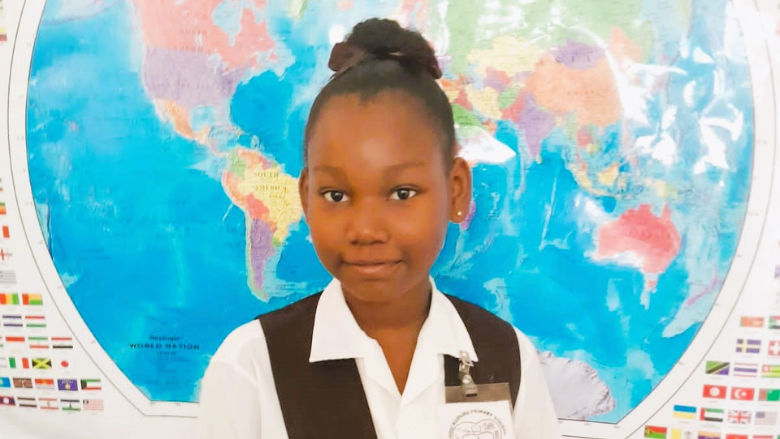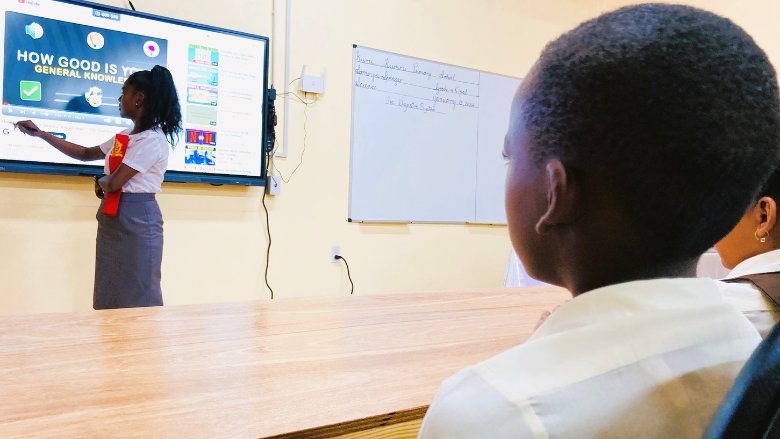With rapid advancements in technology, educational institutions worldwide are leveraging innovative teaching techniques and technologies to enhance accessibility and foster equitable learning opportunities for all students.
In Guyana, the Kuru Kururu Primary School - located along the Soesdyke-Linden Highway, south of the country’s capital - is one of ten primary schools which have benefited from establishing a smart classroom through the Guyana Education Sector Program Project, via a grant from the Global Partnership for Education.
Guyana has demonstrated its commitment to improving education delivery through the use of technology, with some support from the World Bank. As the country moves forward, the Government of Guyana is working to extend the implementation of smart classrooms to every region across the country, especially at the primary and secondary levels.
Vonetta Kellman, the school’s Headteacher, shared that attendance “starts dropping by Thursday, and the students come up with various reasons to just stay home.” Kuru Kururu Primary School is located within a village where farming is the primary economic activity. As a result, students there often miss classes during harvesting season to assist their parents with farming and household activities. She acknowledged that once the smart classroom was completed, the low attendance trend previously observed at the end of the week slowly started changing.
The smart classroom supports the school’s 39 teachers in delivering various subject lessons, with emphasis placed on Mathematics, English Language, Science, and Social Studies for grade four students to prepare them for future examinations. To enhance the learning experience for the 930-student population, the smart classroom is outfitted with advanced technology, including a state-of-the-art touchscreen whiteboard, high-quality cameras for recording lessons, and a monitor to display video content.
Jael December, whose dream is to become a doctor to help her community, said she is in love with her school’s new smart classroom. The nine-year-old finds the smart classroom to be a comfortable place where she can enjoy learning. Jael reported appreciating the smart classroom as it is interactive, especially when it is time for her favourite subject, mathematics. The smart classroom makes her “excited to do multiplication,” she said.

Prior to the installation of the new technology, teachers at the school used learning charts followed by worksheets based on the lesson's area of focus. Now, that has changed "because the smart room is there during the lesson,” and it is “more convenient because everything is in one place," added Ms. Kellman.
She further explained that students are more motivated and excited to use the facility as it enables them to interact with the various features of the smart board. This improves their academic performance and equips them with the skills and knowledge they need to succeed in the digital age as "some children are very underprivileged” and lack “the facilities at home to help them," said the Headteacher.
Staff Development
At Kuru Kururu Primary School, teachers are trained to improve their lessons using smart classroom equipment to ensure high-quality education delivery and improved learning standards.
Ms. Kellman emphasized the importance of her teachers being well-equipped and proficient in using the smart classroom, which is part of the school's staff development training. Most teachers at the school are young adults, which Ms. Kellman believes works to the school's advantage since they can better grasp concepts and connect with students.
Rebecca Persaud, a 24-year-old trainee teacher at Guyana’s Cyril Potter College of Education, is assigned to Kuru Kururu Primary School. She conducts her daily lessons in the smart classroom.
"The smart classroom has changed the way I teach in various aspects. One of the most important changes is that children are more interactive and willing to learn. They are raising their hands to come up to the smart board and touch it, which helps them grasp the concepts I am teaching faster," Rebecca said.
At the school, classrooms carry an open design construct. In the past, Ms. Persaud strained her voice to get the students' attention. However, with the introduction of the smart classroom in a separate enclosed building, she can now speak at a normal volume while still ensuring that all students hear her clearly. Ms. Persaud mentioned that the smart classroom has helped students pay more attention, making it easier for teachers like herself to teach effectively.
The young teacher shared that she faced a significant challenge in her classroom, where most students were visual learners. This means that students need to be visually stimulated to understand the concepts being taught. The smart technology helped her overcome this obstacle, she said. By using the smart board, she could quickly and easily display videos or pictures related to the topic at hand. This made her students more engaged and willing to participate in class activities than before. Ms. Persaud is grateful for this technology and its positive impact on her teaching.
The education sector in Guyana has been witnessing remarkable improvements in recent years. The government has committed to and began upgrading educational facilities, reintroducing cash grants and school feeding programs, providing free textbooks, implementing smart classrooms, and promoting information and communications technology (ICT) in education.
The Government of Guyana’s commitment to developing the education sector is evident in the significant investments made as part of its five-year educational strategic plan. This year, US $676 Million has been allocated within the country’s national budget to establish a world-class education system, and the government's vision is well underway.

